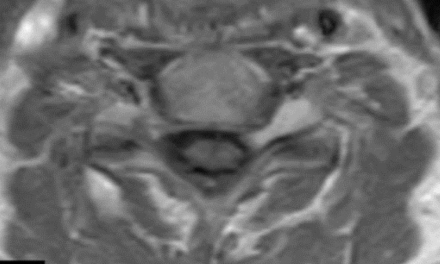
Specialist vs. Generalist – You Decide!

It’s interesting that every couple of years, I’ll have the same conversation with a colleague. We have differing opinions on the topic, “Are you a specialist or a generalist?” It seems like a simple question, but the ramifications will have a drastic impact on your practice.
The ramifications first deal with mindset. How do you view yourself? What is your identity? What is your image? What is your brand?
This decision then leads you down the rabbit hole to decisions on:
1. How you structure your business;
2. How you draft your business plan;
3. How you brand your practice;
4. How you select and attract your target market; and
5. How you set your fees.
Specialist vs. Generalist
1. A specialist has a specific, defined area of interest;
A generalist does not have a specific defined area of interest.
2. A specialist typically has a patient base that in whole or in part falls within a specific, defined area of interest;
A generalist has a patient base with a range of health care problems.
3. A specialist is typically viewed as having the highest level of training and expertise within a given field;
A generalist is viewed as having the standard education and training as other professionals within his or her field.
4. A specialist typically receives increased compensation on a per patient and per visit basis for services;
A generalist typically receives less compensation on a per patient and per visit basis for services.
5. A specialist typically commands greater yearly total compensation (salary, benefits, retirement, bonuses, and perks);
A generalist typically receives smaller yearly monetary compensation (salary, benefits, retirement, bonuses, and perks).
6. A specialist’s talents and services apply to a specific, defined segment of the population;
A generalist’s talents and services apply to a broader, less well-defined segment of the population.
7. A specialist typically advertises and markets specific credentials, specific skill set and specific expertise to the public in a well-defined and cohesive message;
A generalist typically advertises a broad range of services to a wide public market.
8. A specialist may, by virtue of training, marketing, and advertising, see a specific subset of problems;
A generalist may see very broad array of problems within the office.
9. A specialist does not typically appeal to all patients;
A generalist may have a broader patient appeal.
10. A specialist is not typically seen as the first provider portal of entry for many typical medical conditions;
A generalist typically serves as the gatekeeper and portal of entry for many medical services.
11. A specialist typically has a practice built in part or in whole by provider referral;
A generalist may have limited growth based on provider referral.
There are advantages and disadvantages to being either a specialist or generalist.
What is more important are the ramifications of this designation to you and your practice.
In my ongoing conversation with my colleague, he advocates for a reduction of copayments from $50 (specialist) to $30 (generalist/PCP) in his state. His view is that a specialist designation creates a financial obstacle towards care because of higher insurance copays for specialists. Higher copays for a chiropractor as a specialist vs. a PCP/generalist reduce utilization. Reduced copayments could potentially drive more patients into his office and the offices of chiropractors across the US. Increased utilization would translate into greater revenues for his office and chiropractors in general. In fact, he was professionally advocating legislation in his state to mandate lower copays for chiropractors as PCP/generalists.
Our running conversation continues to center on the theme of whether chiropractors view themselves as specialists or generalists. The harsh reality is that the demographics regarding chiropractic usage haven’t changed much in the past several decades.
National demographics of utilization routinely show that our services are used by a tight demographic that includes:
- A range of 6-14% of the population & more realistically 8-12%
- Educated patients: College degree (associates degree) or higher (bachelors, masters or doctorate)
- Females > Males
- Middle Aged (30-55)
- Families
- Patients with disposable income
- Patients that are typically higher Income earners for their geographic area
- Innovators & Early Adopters: Patients that are relatively early to use complementary and alternative medicine (CAM) services
- Patients with strong beliefs or fear of more invasive options such as medications, injections or surgical management
- Patients looking for more personalized and satisfying medical care
- Patients that overwhelmingly seek conservative care options for spinal and neuromusculoskeletal (NMSK) conditions.
National Usage Statistics
The important statistic is the range of 8-12% national usage rates. Another important fact is that the population largely sees us as a niche provider in conservative spinal and conservative NMSK conditions. The rate of 8-12% hasn’t changed much over several decades, despite the profession’s campaigns. The identity of the profession and professional image also hasn’t changed too much in the past several decades.
It’s a worthwhile quest to attempt to spread usage to 14-20%; however, it will probably take several more generations, and our profession will face significant economic and political obstacles to do so. We face a well-organized and funded establishment of medical, pharmaceutical and insurance industries. These giants have vested interest in their own agendas for NMSK care, despite repeated studies that show how affordable and effective our care is for spinal and NMSK conditions.
Conclusion
For these reasons, I respectfully differ with my colleague. I don’t feel that lowering copayments and moving toward the role of generalist is the best path forward. I don’t see that reducing costs will attract newer markets and more patients to our office. This strategy of lowering our price point to expand total utilization across the board hasn’t worked in decades for our profession. We have a select and well-defined market that values and is satisfied with our services. These patients are typically ready, willing and able to pay the additional fees for perceived value, quality of life measures and overall satisfaction that we can routinely deliver.
I believe that embracing the role of the specialist, and namely the premier specialist, in conservative spinal and NMSK conditions, would provide more value to my colleague’s practice, his patients and his bottom line. This subtle, but impactful, change in mindset may provide value to many chiropractors and chiropractic offices across the nation.
Editor’s Note:
The Illinois Chiropractic Society continues its effort to increase overall chiropractic utilization. From our patient based website, www.HealthierIllinois.com, to our efforts to have a greater integration with hospital systems, we are seeing the needle move. The ICS regularly meets with employer groups and insurance providers to ensure they improve their employees and customers financial access to the services performed in your office. We continue our efforts to achieve our 18% by 2018 goal and drive more patients into your office. Find out more by visiting www.18by2018.com and www.HealthierIllinois.com.
About The Author
Dr. Pappas is a chiropractic physician, certified athletic trainer and certified strength and conditioning specialist. Dr. Pappas blends the best of physical medicine with the best of integrated medicine to help patients and athletes of all shapes and sizes. He utilizes tools such as chiropractic manipulation, soft tissue mobilization, biomedical acupuncture, functional movement based assessment, the McKenzie Method, strength training and conditioning, kinesiology taping, customized nutrition and specialty laboratory testing (blood, saliva, urine, and stool) when needed. Dr. Pappas’ clinical focus is sports medicine, conservative orthopedics, rehabilitation, and integrated medicine. His sports medicine interests are endurance athletes, overhead athletes (pitchers, throwers, volleyball players and tennis players), contact sports athletes (football, rugby, lacrosse, field hockey, soccer, and basketball) and Crossfit athletes. He has worked with athletes at all levels from professional to amateur. He reads and interprets the medical literature daily to stay abreast of cutting edge advances in his field. The doctor is a former sports medicine volunteer for Andrew High School in Tinley Park, IL. He is an avid runner and aspiring triathlete having completed 5 marathons, 5 half marathons and numerous 5 and 10k races. He has goals of qualifying and competing in the Boston and New York Marathons, the Ironman in Kona, Hawaii, going Rim to Rim across the Grand Canyon and climbing Mt. Kilimanjaro in Kenya, Africa. He recently completed the Pikes Peak Ascent, a half marathon to the 14,115-foot summit of Pikes Peak. One day he hopes to serve his country as a team chiropractor for the United States Olympic teams and serve as a team chiropractor for one of the professional teams in Chicago. His mantra is “Why Put Off Feeling Good?” He can be reached by email at drdinopappas@gmail.com or at 708-275-1459.

















